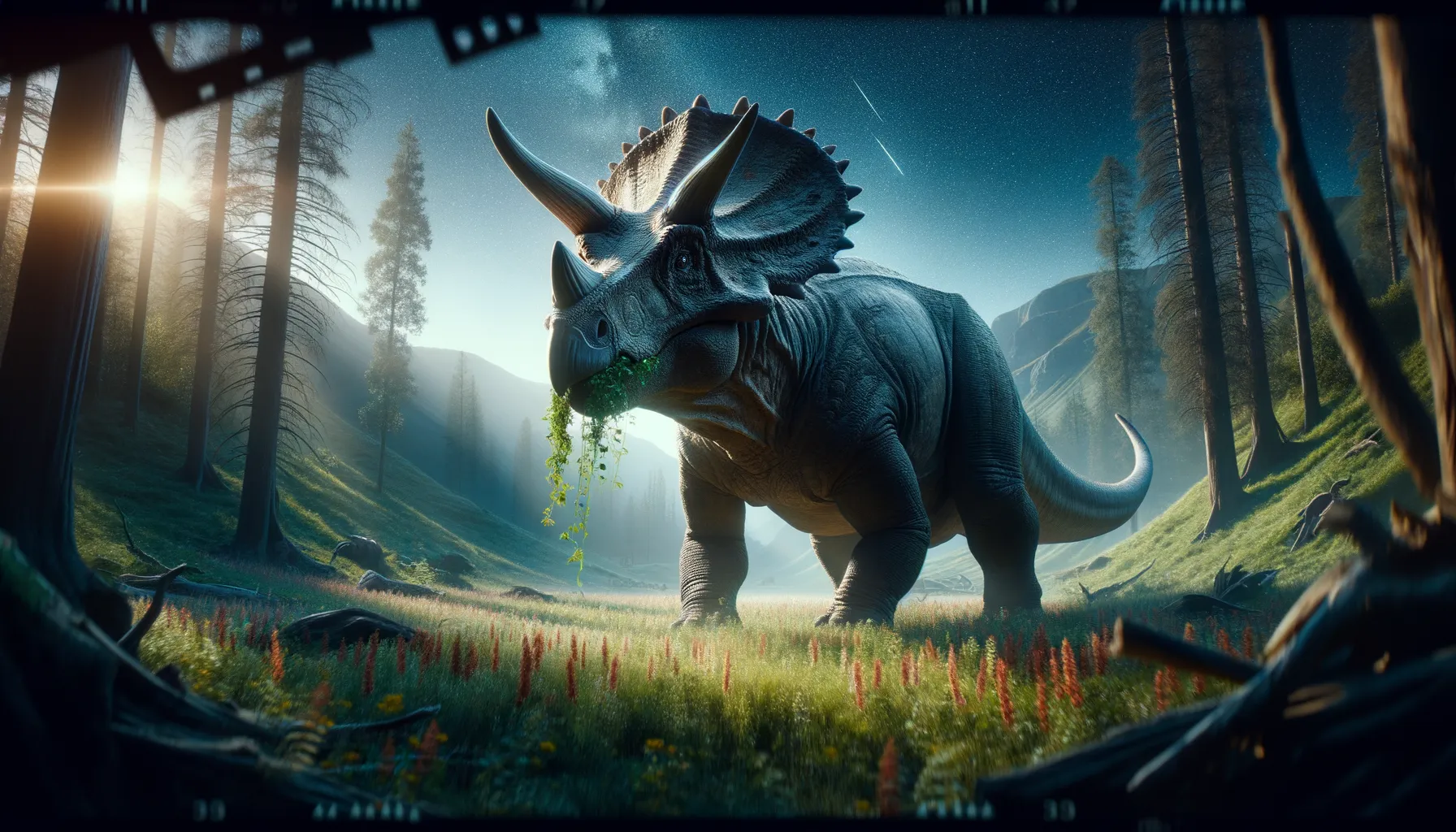
Udanoceratops
Gentle giant of the Cretaceous forests.
Period
Cretaceous
Length
About 4 meters long.
Height
Approximately 1.5 to 2 meters tall.
Weight
Roughly 800 to 1,000 kilograms.
Udanoceratops was a herbivorous dinosaur characterized by its large frill without the prominent horns seen in many of its relatives. It lived during the Late Cretaceous period and thrived in what is now Mongolia. Known for its sturdy built, Udanoceratops roamed ancient woodlands feeding on low-growing vegetation. Although it appears hornless compared to other ceratopsians, its frill likely provided protection and a means for visual communication within its group.
Diet
Udanoceratops primarily fed on tough, fibrous plants. It likely grazed on ferns, cycads, and other low-lying vegetation. Its beak was adept at clipping plants close to the ground.
Hunting
As a herbivore, it did not hunt for prey. Instead, it foraged among shrubs and trees, using its keen sense of smell to locate food. Any defense was passive, designed to deter predators.
Environmental challenges
Udanoceratops faced various challenges, including changes in climate that might affect the availability of food sources. Periods of drought could reduce plant growth, leading to scarcity. Predators also posed a constant threat, requiring it to remain vigilant. Additionally, competition for food with other herbivores might have influenced its adaptation strategies.
Speed
Likely slow, ideal for a plant-eater.
Lifespan
Estimated to be around 30-40 years.
First discovery
First found in Mongolia in the late 20th century.
Fun Facts
- Udanoceratops was a member of the ceratopsian family, which are known for their beaked faces and, often, impressive head frills.
- This dinosaur lived during the Late Cretaceous period, around 70 million years ago, in what is now Mongolia.
- Unlike some of its more famous relatives like Triceratops, Udanoceratops did not have large horns on its face.
- It is believed to have been a herbivore, feeding on the lush vegetation of its time.
- Udanoceratops was relatively small compared to other ceratopsians, estimated to be about 13 to 16 feet long.
- The first fossils of Udanoceratops were discovered in the 1980s, providing new insights into the diversity of ceratopsians.
- Its name, Udanoceratops, means 'horned face from Udano' because it was discovered near the Udano region.
Growth and Development
This dinosaur likely grew steadily over its life, reaching full size within a few years. Juveniles likely had high growth rates to escape predation. Their bones show growth rings, similar to trees, indicating seasonal growth spurts. Social interactions and herd behavior probably played a crucial role in their development.
Habitat
Udanoceratops lived in forested regions with plenty of vegetation. Its environment was likely semi-arid with seasonal rain, supporting diverse plant life. These habitats provided ample food and some protection from predators. Large herds might have migrated to find new feeding grounds as resources got depleted.
Interaction with other species
Udanoceratops likely coexisted with other dinosaur species, with some competition for food resources. It may have displayed simple social behavior within herds to deter predators. When faced with carnivorous dinosaurs, it might have used its size and numbers for defense. This coexistence might have also led to niche adaptations in diet.
Natural lifespan
In optimal conditions, it lived up to 40 years.
Reproduction
Breeding likely occurred seasonally with environmental cues triggering mating. Females may have laid eggs in nests, with some parental care involved. Hatchlings were vulnerable, relying on adult protection within the herd. Growth rates were high, allowing young to quickly reach sizes less susceptible to predation.
Social behaviour
Social structures were probably simple, forming herds for protection. Communication might involve visual signals using their frills and vocalizations. Group size would vary based on resource availability, with larger herds in more abundant areas. This social behavior enhanced survival in a challenging environment.
Fossil locations
The majority of Udanoceratops fossils have been unearthed in Mongolia. These discoveries have been crucial in understanding ceratopsian diversity. Fossil evidence provides insight into their anatomy and habitat preferences. Most specimens are well-preserved, allowing detailed studies of their features.
